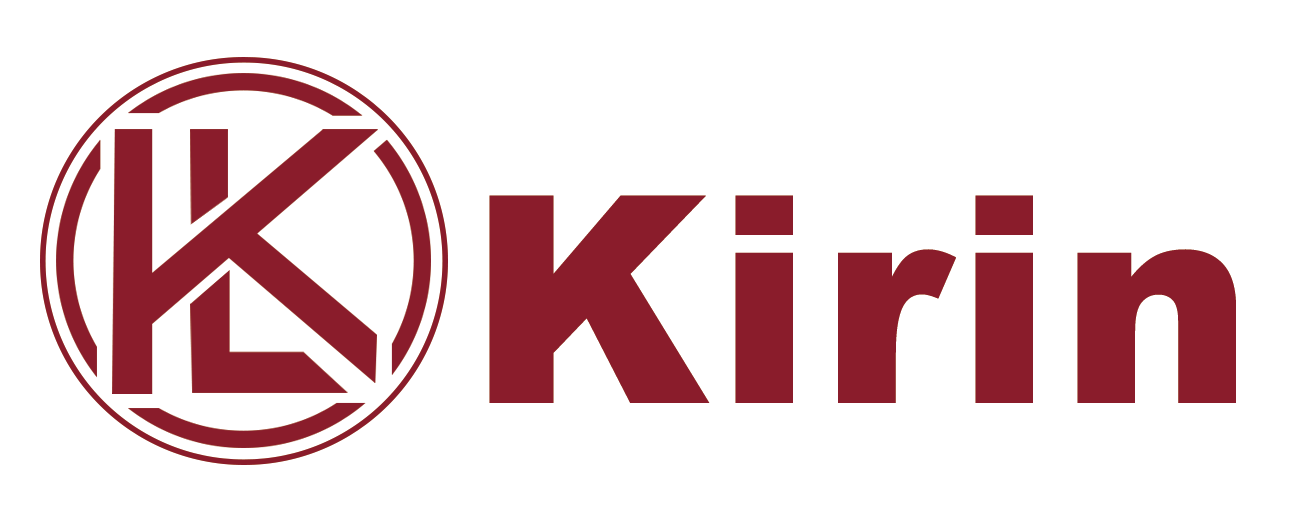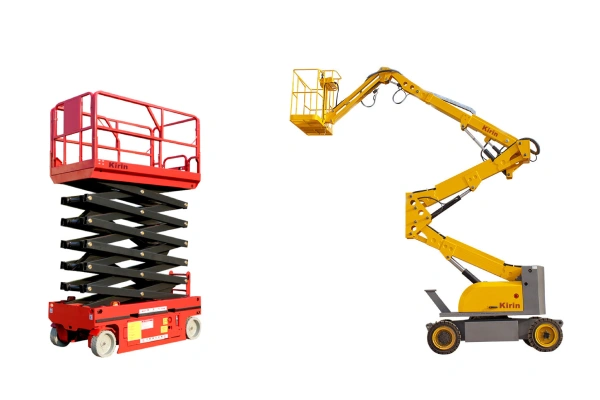Elevating Safety – The Critical Role of Aerial Boom Lift Inspections
Working at height is inherently risky, and few pieces of equipment are as central to elevated work as the aerial boom lift. These versatile machines, allowing workers to reach impressive heights and navigate challenging access points, are indispensable across industries like construction, maintenance, and utilities.
However, their very nature demands an unwavering commitment to safety. At the heart of this commitment lies a robust inspection program. Neglecting regular inspections of your aerial boom lift isn’t just a gamble with equipment longevity; it’s a direct threat to the lives of operators and those working around them. A well-maintained aerial boom lift is a safe aerial boom lift, and safety should always be the top priority. This blog post will delve into the crucial topic of when and why your aerial boom lift needs to be inspected, outlining the different types of inspections and what they entail.
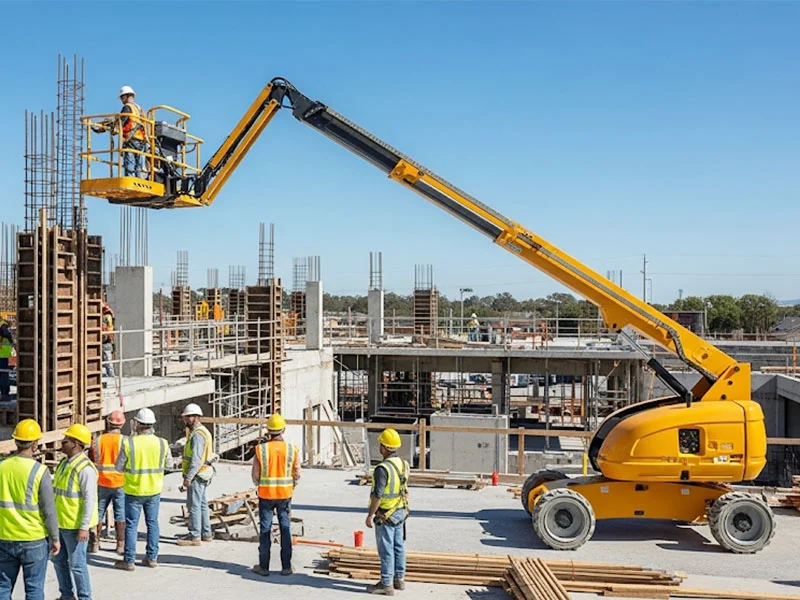
Pre-Operation Inspection: Your Daily Safety Check (Before Every Use)
Think of the pre-operation inspection as your daily safety ritual. Before an aerial boom lift even powers on for a task, a thorough visual and functional check is absolutely essential. This isn’t a formality; it’s a critical first line of defense. The operator, who is most familiar with the machine’s immediate behavior, is typically responsible for this check. What does it involve?
- Visual Inspection: Look for any obvious damage, leaks (hydraulic fluid, fuel), loose or missing parts, cracked welds, or excessive wear on tires. Check the condition of the control decals and safety warnings.
- Fluid Levels: Verify hydraulic fluid, engine oil, and fuel levels are adequate.
- Controls: Test all operating controls – up, down, extend, retract, rotate, and emergency stop buttons – to ensure they respond correctly and smoothly.
- Safety Devices: Confirm that all safety devices, such as limit switches, platform gates, and alarms, are functioning properly.
- Brakes: Check the braking system’s effectiveness.
- Tires and Wheels: Inspect for proper inflation, cuts, or bulges.
- Emergency Lowering System: Test the emergency lowering procedure to ensure it works in case of a power failure.
This quick yet comprehensive pre-operation inspection sets the tone for a safe workday and is a non-negotiable step before every single use of the aerial boom lift.
Frequent (Monthly) Inspection: A Deeper Dive into Operational Health
Beyond the daily check, a more in-depth “frequent” inspection is required. This is often conducted on a monthly basis, or after 150 hours of operation, whichever comes first. This inspection goes beyond the surface and requires a qualified person – someone with the knowledge and experience to identify potential issues that might not be immediately apparent to an operator. This could be an in-house mechanic or a certified third-party inspector.
The frequent inspection delves deeper into the mechanical and structural integrity of the aerial boom lift. It includes:
- Detailed Visual Inspection: A more meticulous examination for cracks, deformation, or corrosion in structural components, especially the boom, chassis, and outriggers.
- Electrical System Check: Inspection of wiring, connections, and batteries for damage or corrosion.
- Hydraulic System Check: Thorough inspection of hoses, cylinders, valves, and pumps for leaks, proper pressure, and wear.
- Lubrication: Checking and ensuring all pivot points and moving parts are adequately lubricated.
- Fasteners and Pins: Verifying the tightness of all bolts, nuts, and pins.
- Functionality Test: Operating the aerial boom lift through its full range of motion, observing for any unusual noises, jerky movements, or delayed responses.
Documentation of these inspections is crucial, noting any deficiencies found and the corrective actions taken for the aerial boom lift.
Annual (Periodic) Inspection: The Comprehensive Health Check
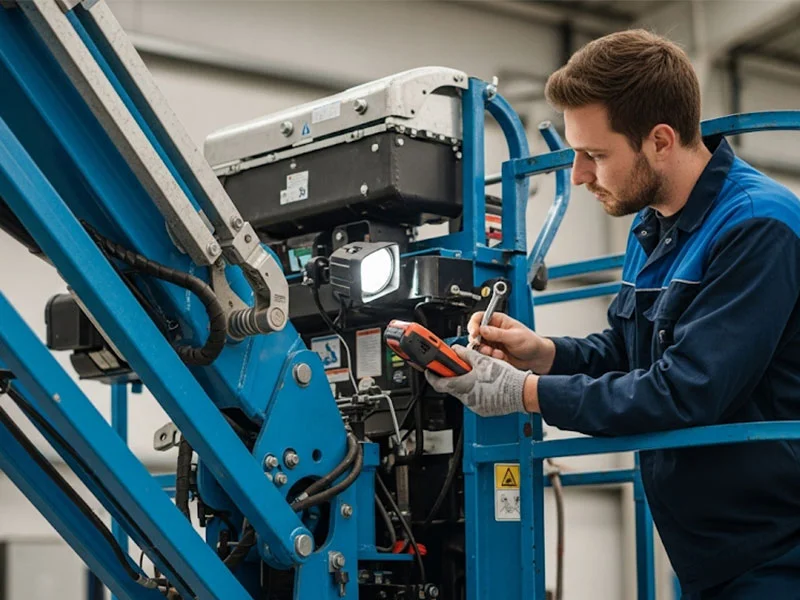
The annual inspection, also known as a periodic inspection, is the most comprehensive assessment of an aerial boom lift. This inspection must be performed by a qualified and authorized inspector, often a third-party specialist, as it typically involves more specialized tools and knowledge than an in-house team might possess. This inspection is mandatory at least once a year, or after 750 hours of operation, whichever comes first.
The annual inspection essentially takes the aerial boom lift through a complete physical. It includes everything from the frequent inspection, plus:
- Disassembly (as needed): Certain components may need to be disassembled to inspect internal wear or damage.
- Non-Destructive Testing (NDT): Techniques like magnetic particle inspection or ultrasonic testing may be used to detect cracks or flaws not visible to the naked eye, particularly in critical structural welds of the aerial boom lift.
- Load Testing: The aerial boom lift is often tested with a rated load to ensure its stability and lifting capacity.
- Records Review: A review of previous inspection reports, maintenance logs, and repair history to identify recurring issues or potential long-term problems.
- Compliance Verification: Ensuring the aerial boom lift meets all current safety standards and regulations, and that all safety decals and manuals are present and legible.
Successfully completing the annual inspection often leads to the renewal of the aerial/scissor/boom lift certification, a vital document for proving compliance and safety.
Special Circumstance Inspections: Beyond the Schedule
While routine inspections are critical, certain events necessitate an immediate and unscheduled inspection of the aerial boom lift. These “special circumstance” inspections are triggered by incidents that could compromise the integrity or safety of the equipment.
- After an Accident or Incident: Any time an aerial boom lift is involved in an accident, even a minor one (e.g., impact with an obstruction, significant overload), it must be taken out of service immediately and thoroughly inspected by a qualified person before being returned to operation.
- After Extensive Modifications or Repairs: If the aerial boom lift undergoes major repairs, structural modifications, or replacement of critical components, a full inspection is required to ensure the work was done correctly and the machine remains safe.
- After Prolonged Storage or Disuse: An aerial boom lift that has been out of service for an extended period (e.g., more than three months) should undergo a thorough inspection before being put back into operation.
- If There’s a Suspected Malfunction: If an operator notices any unusual behavior, sounds, or malfunctions during operation, the aerial boom lift should be immediately shut down and inspected by a qualified person.
These unscheduled inspections are crucial for addressing immediate safety concerns and preventing further damage or injury to the aerial boom lift.
Key Elements of an Effective Inspection Program
A truly effective inspection program for an aerial boom lift goes beyond merely performing checks; it encompasses several vital elements:
- Trained and Qualified Personnel: All individuals involved in inspections, from operators to certified technicians, must be adequately trained and possess the necessary knowledge and experience. This includes possessing relevant aerial/scissor/boom lift certification.
- Detailed Documentation: Every inspection, regardless of its type, must be meticulously documented. This includes dates, inspector’s name, findings, corrective actions taken, and the date the machine was returned to service. These records are invaluable for tracking maintenance history and demonstrating compliance.
- Prompt Rectification of Deficiencies: Any deficiencies identified during an inspection must be addressed immediately. An aerial boom lift with known defects should never be operated.
- Access to Manufacturer’s Manuals: Operators and inspectors should have ready access to the aerial boom lift manufacturer’s operation and maintenance manuals, as these contain specific inspection points and procedures for that particular model.
- Continuous Improvement: An effective program involves reviewing inspection data to identify recurring issues, improve maintenance practices, and enhance overall safety for the aerial boom lift.
Everything To Know About Aerial Lift Inspections
Inspections for an aerial boom lift are not merely about ticking boxes; they are a comprehensive risk management strategy. They encompass a wide range of aspects, from the most basic visual checks to highly technical diagnostic procedures. The goal is to proactively identify and mitigate potential hazards before they escalate into dangerous situations. This includes everything from the structural integrity of the boom aerial lift to the functionality of its smallest electrical component. Understanding these intricacies is key to maintaining a safe and efficient work environment when using any aerial boom lift. This also applies to an aerial boom lift for sale – a reputable seller will provide comprehensive inspection and maintenance records.
How to Inspect an Aerial or Boom Lift
While a detailed guide to inspecting every make and model is beyond the scope of this post, the general principles remain consistent. For a thorough inspection of an aerial boom lift, follow these steps:
- Preparation: Ensure the aerial boom lift is on a level surface, powered off, and secured to prevent accidental movement. Have the manufacturer’s manual handy.
- Systematic Approach: Begin with a top-down or bottom-up approach, ensuring no area is overlooked. Many use a checklist to ensure consistency.
- Visual Scrutiny: Examine every inch for signs of damage, wear, corrosion, or leaks. Pay close attention to welds, hydraulic lines, electrical cables, and pivot points on the aerial lift boom.
- Functional Testing: Once visual checks are complete, power on the aerial boom lift (if applicable) and test all controls in a safe, open area. Listen for unusual noises and observe the smoothness of operation.
- Documentation: Immediately record all findings, positive or negative, and specify any corrective actions required.
- Certification: For periodic and annual inspections, ensure the inspector holds the appropriate aerial/scissor/boom lift certification.
Remember, if you’re not qualified to perform a certain type of inspection, especially the annual one, do not attempt it. Always defer to certified professionals.
Why Regular Inspections Are Non-Negotiable
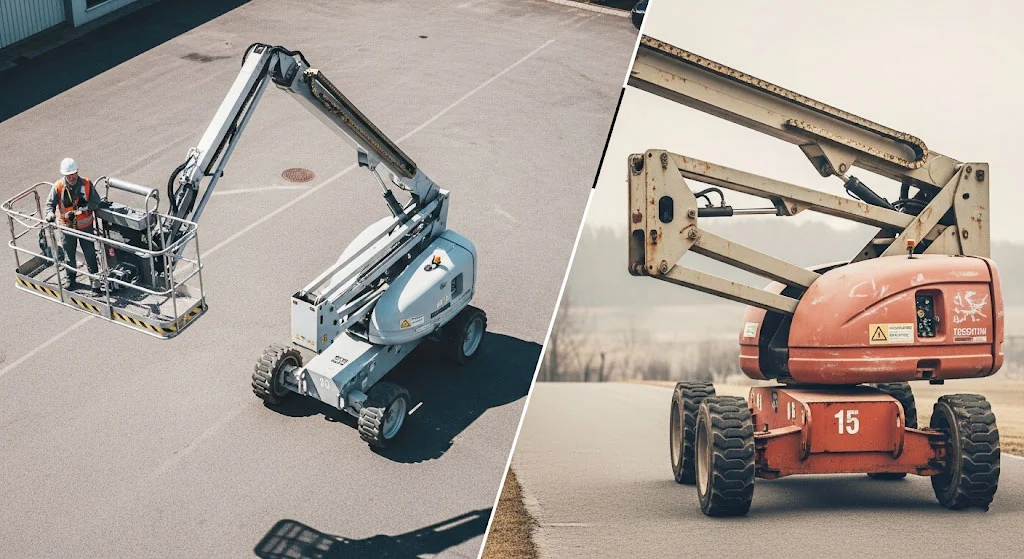
The reasons for adhering to a strict inspection schedule for your aerial boom lift are manifold and compelling:
- Safety of Personnel: This is, without a doubt, the paramount reason. Regular inspections drastically reduce the risk of mechanical failure, preventing falls, tip-overs, and other catastrophic accidents that can result in serious injury or fatalities. A well-maintained aerial boom lift directly translates to a safer working environment.
- Compliance with Regulations: Regulatory bodies have strict requirements for aerial boom lifts. Non-compliance can lead to hefty fines, legal liabilities, and even the cessation of operations. Maintaining valid aerial/scissor/boom lift certification through regular inspections is key.
- Extended Equipment Lifespan: Proactive identification and repair of minor issues prevent them from escalating into major, costly breakdowns. Regular maintenance, informed by inspections, helps to prolong the operational life of your aerial boom lift, saving you money on premature replacements.
- Increased Productivity: A well-maintained aerial boom lift is less likely to experience unexpected downtime due to malfunctions, ensuring projects stay on schedule and productivity remains high.
- Reduced Operating Costs: While inspections have a cost, they are significantly less expensive than emergency repairs, liability claims from accidents, or the cost of replacing a damaged aerial boom lift.
- Insurance Requirements: Many insurance policies require regular inspections as a condition of coverage for aerial boom lifts. Failure to comply could invalidate your policy in the event of an accident.
Conclusion: Invest in Safety, Invest in Success
The question “When should an aerial boom lift be inspected?” has a clear answer: frequently and systematically. From the daily pre-operation check to the comprehensive annual overhaul and special circumstance inspections, each level plays a vital role in ensuring the safety and operational integrity of this essential piece of equipment. Investing in a robust inspection program for your aerial boom lift is not merely a regulatory obligation; it is a strategic investment in the safety of your workforce, the longevity of your assets, and the overall success of your operations. Prioritizing aerial boom lift safety through diligent inspections is a commitment that pays dividends in both human lives and business profitability.
FAQs
Q1: What is the most important inspection for an aerial boom lift?
A1: While all inspections are crucial, the pre-operation inspection is arguably the most important as it’s performed before every use by the operator, catching immediate issues. However, the annual (periodic) inspection is the most comprehensive and mandated for aerial/scissor/boom lift certification.
Q2: Who is qualified to perform an aerial boom lift inspection?
A2: A “qualified person” is someone who, by possession of a recognized degree, certificate, or professional standing, or who by extensive knowledge, training, and experience, has successfully demonstrated his/her ability to solve or resolve problems relating to the subject matter, the work, or the project. For annual inspections, it’s often recommended or required to use a third-party certified inspector, especially for complex aerial boom lifts.
Q3: How often should an aerial boom lift be recertified?
A3: An aerial boom lift typically requires recertification annually, following a successful periodic (annual) inspection. This process ensures the aerial/scissor/boom lift certification remains current and valid.
Q4: Can an aerial boom lift be operated if an inspection reveals a defect?
A4: Absolutely not. If any inspection reveals a defect that affects the safety or operation of the aerial boom lift, it must be immediately taken out of service and repaired by a qualified person before being returned to use.
Q5: Are there different inspection requirements for different types of aerial lifts (e.g., boom aerial lift vs. scissor lift)?
A5: While the principles are similar, specific inspection points and procedures may vary between different types of aerial lifts due to their unique designs. Always refer to the manufacturer’s manual and applicable industry standards (like ANSI A92 series) for the specific aerial boom lift or aerial/scissor/boom lift in question.
